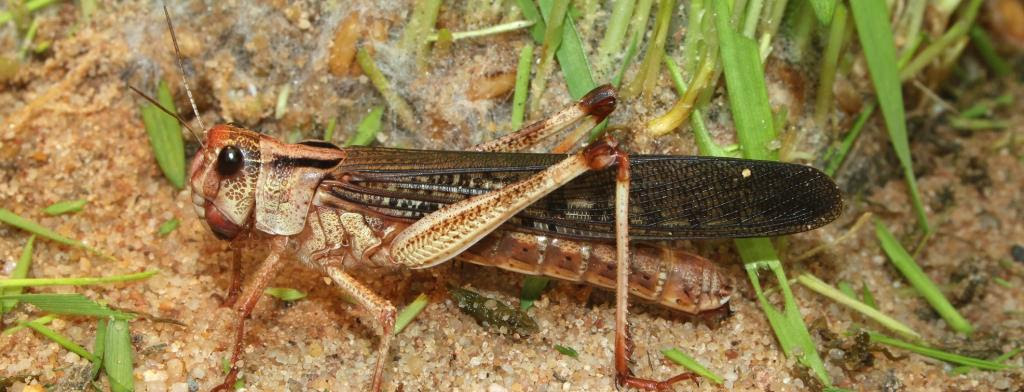
Locust Hotspots of the world
Desert locusts are breeding 400 times more than usual due to favorable climatic conditions. This explosive multiplication could spell disaster for India, Iran and Pakistan, West Africa as well as the Horn of Africa and the Red Sea region. The outbreak is further compounded by the challenges of COVID-19, which have hampered preparation efforts to fight and control the pests.
The Horn of Africa is facing the worst desert locust crisis in over 25 years. Meanwhile, Kenya and Iran are facing their most serious locust crisis in 70 years. Large swarms of desert locusts have also entered areas in India where they had not been seen since 1993 and have already caused damage to crops in Rajasthan, Gujarat, Madhya Pradesh, parts of Uttar Pradesh and Maharashtra, according to the United Nations Food and Agricultural Organization (FAO). The current situation results in an unprecedented threat to food security and livelihoods in the region and could lead to further suffering, displacement, and potential conflicts.
Desert locust (Schistocerca gregaria) upsurges aren’t a new phenomenon. Locusts are one of the oldest migratory pests in the world and have wreaked havoc on crops across the globe for centuries. When huge swarms infest many countries and spread across several regions or continents, it becomes a plague. A plague of desert locusts, the most destructive locust species of all, can easily affect 20 percent of the Earth's land, potentially damaging the livelihoods of one-tenth of the world's population and seriously affecting food security. Desert Locusts can be found in 30 countries. During upsurges, they can reach as many as 60 countries.
Locusts can form swarms, which can be dense and highly mobile and can then fly as much as 150km a day, given favorable winds. These swarms can devour large amounts of vegetation and crops. Locust swarms can vary from less than one square kilometer to over 1000 square kilometers. In each square kilometer of a swarm, there can be between 40 million and sometimes as many as 80 million locust adults. Each locust is capable of eating its weight in plants each day. A small 1 km2 swarm will eat the same amount of food in one day as 35,000 people.
Abnormally heavy rains last year—which scientists say were made more likely by the long-term warming of the Indian Ocean, a hallmark of climate change—have exacerbated a locust infestation across eastern Africa. The extreme weather patterns have been linked to the accumulation of greenhouse gases in the atmosphere. Higher temperatures make it more inviting for locusts to spread to places where the climate wasn’t as suitable before—and in turn, destroy vast swaths of farmland and pasture for some of the poorest people on the planet.
Down to Earth
FAO
The New York Times
Socioeconomic impressions
Food security and nutrition: Forecasts from the recently released Global Report on Food Crises indicated that more than 25 million people will experience acute hunger in Eastern Africa. The potential damage to crops and livestock in the region could reach $8 billion in 2020 and an additional $17 million in Yemen. About nearly 50,000 hectares (125,000 acres) of croplands have already been destroyed in India, according to Aljazeera News. Similarly, in Iran, Mir, a spokesman for the ministry's Plant Protection Organization, said desert locusts had attacked more than 200,000 hectares (494,000 acres) of orchards and farmland in seven southern provinces stretching from eastern Iran on the border with Pakistan to the southwestern border with Iraq. If food supplies further decrease because of locust swarms, it could exacerbate food insecurity.
Economic development: Global trade on agricultural commodities suffers a great deal due to the destruction of crops. Data from the World Food Program shows that regional cereal and tuber food prices in the Horn of Africa are experiencing concerning spikes. The price spikes can have devastating impacts on rural households in developing countries since these households spend a large percentage of their incomes on food.
Additionally, locust outbreak response and control is costly as millions of liters of pesticides have to be bought, and the necessary equipment and labor acquired. Further, recovering from the destructive impact of locust attacks puts a huge economic burden on the affected farmers and countries
Environment: Locust control quite often results in many environment-related side effects due to high use of pesticides and other chemicals. Many times, it is difficult to discriminate between the locust swarms and other non-harmful organisms and vegetation, raising the cost of collateral damage to the environment. Further, the possibility of human intoxication by the chemical pesticides used is always looming.
UN Spider
FAO
Aljazeera
Fresh Fruit Portal
Emergency responses so far
By nature, locust-control campaigns and locust emergencies are extremely difficult. It is a rolling emergency, unlike an earthquake or a flood that happens once, and the response and the cleanup operations are ongoing and complicated. Locusts can also change their DNA according to the prevailing environmental situation and therefore the control of locusts becomes more difficult, according to scientists.
Without action to control the spread, the locust swarms will definitely damage food systems. Households and families are struggling to meet their basic needs; their nutrition, health care, and education may end up being neglected, which hinders long-term health and development, especially for children.
FAO rapidly supported governments in scaling up control activities in January and is launching an urgent appeal to support ten countries to contain the upsurge and anticipate devastating impacts on livelihoods and food security. Training has been a major issue because most countries have not experienced locust swarms for decades and methods have to be adapted to abide by social-distancing requirements. On May 22 the World Bank has also announced $500 million to help countries in Africa and the Middle East respond to desert locust swarms, while the Food and Agriculture Organization has increased its appeal to deal with the crisis.
Despite control operations, recent heavy rains have created ideal conditions for the pest's reproduction in several countries. Young juveniles will become voracious adults in June just as farmers begin to harvest, compounding an already bleak food security situation. The locusts, combined with the impacts of COVID-19, could have catastrophic consequences on livelihoods and food security, Qu, the Director-General of the Food and Agriculture Organization of the United Nations (FAO) emphasized. Accordingly, collaborative endeavors from governmental and non-governmental organizations all over the world are stalwartly requested for the short-term, medium and long-term action to support governments and regional authorities to build capacity to anticipate, prepare and prevent future outbreaks and safe the livelihoods of community dwellings in the hot spots.
Devex
World Grain
Scientific American
